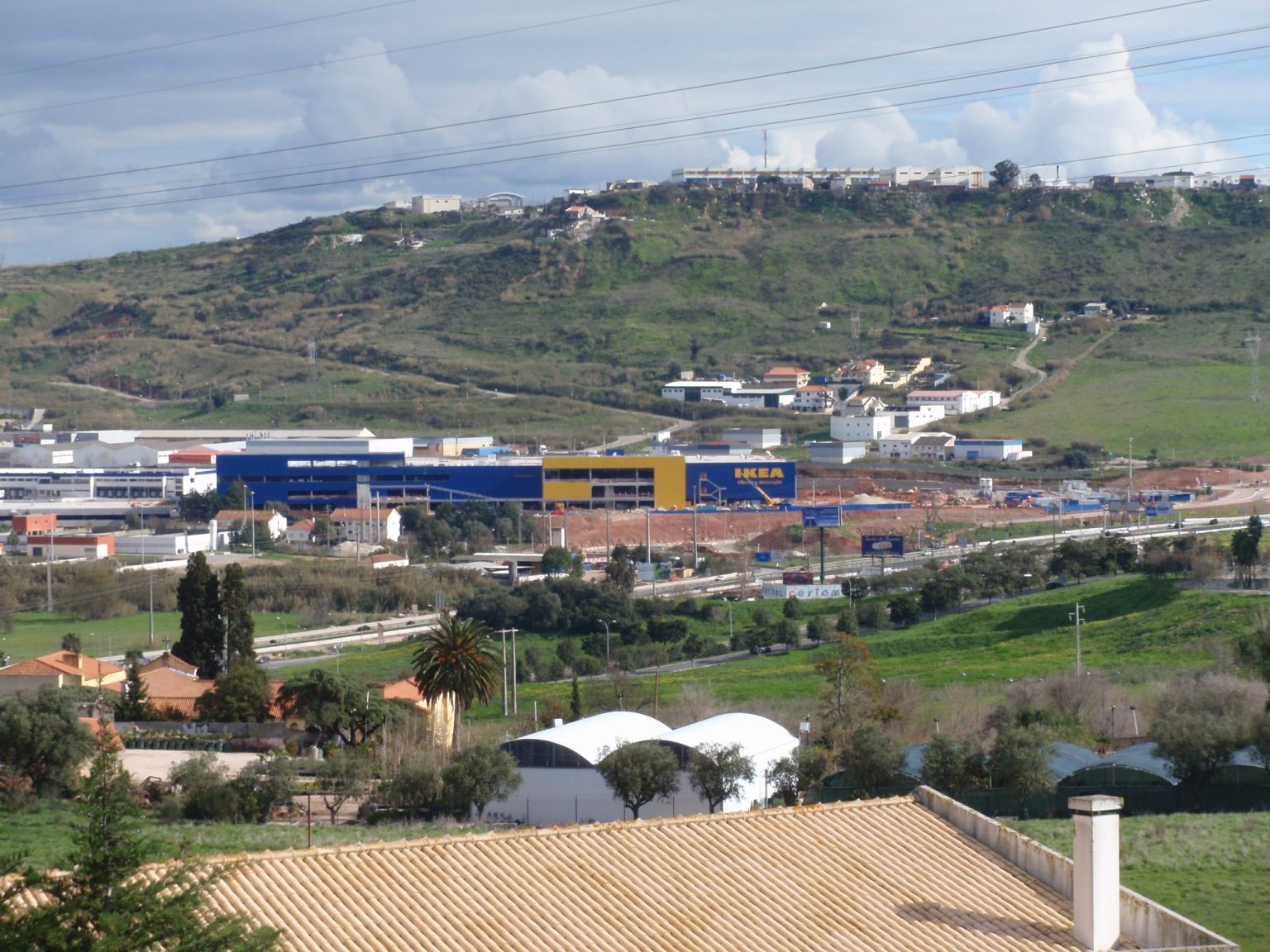The scandal that recently shocked Lithuania has many aspects well known from the Polish reality: aggressive historical policy, cult of the sacrosanct “cursed soldiers”, and fight with Russian propaganda. And there is no good ending.

Adolfas Ramanauskas “Vanagas” as a commander of an anti-communist partisan brigade
Vilnius, end of October, time for Seimas to choose a patron for the upcoming year. One of the candidates is Adolfas Ramanauskas AKA “Vanagas”, one of the best-known anti-communist partisan brigades commanders, the Lithuanian “cursed soldiers”. In the forest from 1945, as the first commander of the brigades in the Alytus and Merkinė region, from Autumn 1947, Dainava partisan district commandant, between 1950 and 1952, commander of all the armed forces of the Movement for the Struggle for Lithuanian Freedom, i.e. the leader of the underground. In 1952, due to its actual breakup, he withdrew from fighting and spent the next four years hiding under a false name. He was ultimately found by the KGB, arrested, tortured, and shot. In 1998, the independent state of Lithuania posthumously appointed him general-major and granted him the highest state awards. He is the key protagonist in the mythology of the Forest Brothers, or simply the partisans, as they are called in Lithuania, even older than the Polish legend of the “cursed soldiers”.
And suddenly: a scandal. Rūta Vanagaitė, who provoked the biggest historical and social debate of the recent years, turns to the parliament. Her book, “Mūsiškiai: Kelionė su priešu” (“Our People: Journey with an Enemy”) is a shocking record of a journey along the routes of the Holocaust of Lithuanian Jews. The author discovers the extent to which her compatriots collaborated with the Germans, carried out executions, stole the properties of the murdered, and then erased these facts from the collective memory. The writer — who is a theatrologist and has no historical education — claims that Ramanauskas is not a hero, but a NKVD agent recruited in 1940, shortly after the inclusion of Lithuania into the USSR. She maintains that when arrested, he revealed the identities of all his brothers-in-arms. She denies that he was tortured during the investigation and states that his injuries, willingly described in drastic details by those who worship the partisans, were a result of a suicide attempt. Finally, she assures that her claims are based on historical documents she saw when working on her book.
Vanagaitė states that her goal was to awaken the consciences, open another historical wound. She even emphasised that she was aware that the effect would be even more striking that in case of her book about Jews. And it is.
The not too original, repetitive accusations of spreading Russian propaganda that started when the writer published “Mūsiškiai:” are the least of the problems. On 27 October, a known writer and TV journalist Andrius Tapinas calls the publisher of Vanagaitė’s works to withdraw them from sales and accuses her of cynical advertising of her autobiography “Višta strimelės galva” (Chicken with a herring’s head), which appeared on a market shortly before that. The call was heard. The Alma Littera publishing house announces that it is the autobiography off the shelves. The executive director Danguolė Viliūnienė declares that the company will no longer sell any older books by this author, as her statements are “inconsistent with its values”. Maxima, a Lithuanian shop chain, also declares that it will pull the autobiography off the shelves.
“Go to the forest…”
Afterwards, numerous libellous insults appear in social and traditional media, in particular the conservative ones. Vanagaitė is accused of betrayal, there are calls for depriving her of Lithuanian citizenship and force her to leave the country. Arvydas Anušauskas, head of the historical justice and memory parliamentary commission also condemns her. Unlike Vanagaitė, he is a professional historian, who wrote about partisans before, but in a heroic and martyrological tone. Moreover, Aukse Ūsiene, a military analyst, states that the writer is on the “first line of the information war”. Chief Executive Saulius Skvernelis and the leader of the opposition Gintaras Paluckas leave their differences aside and accuse the author of counterfeiting history and manipulating facts, although they reserve that the campaign against the writer has gone too far.

Vytautas Landsbergis / photo: Wikimedia Commons
It would be more accurate to say that this has reached the level of absurdity. The words of the President of the Parliament, Vytautas Landsbergis, prove it. His statement is worth quoting: “You (…), called a writer by some people, use your literary imagination, realise what you are talking about, and then go to the forest where aspens grow, pray and choose a punishment for yourself.” Moreover, the politician calls Vanagaitė “Ms. Dushanski”, referring to a KGB officer and one of the commanders of the operation of arresting “Vanagas”. One cannot think of a worse insult that could come from a representative of the Lithuanian political elites.
However, some people defend the writer. The most influential among them is Tomas Venclova, a poet, translator, literary scholar, and dissident. The defendants seem to revoke obvious things: if Lithuania is a truly democratic state, it must respect the freedom of speech. The statement is nonsensical? Historians should answer it, indicating the mistakes and manipulations. Organising a witch-hunt, throwing away books (not related with the subject of the controversy) is below any standards and does not serve the society in any way. Nevertheless, the attacks are much louder.
Remorse
On 29 October, Vanagaitė withdraws her statements. She no longer accuses Ramanauskas. She argues that she realized her mistake when she read an interview with historian Darius Juodis, one of few substantive and not aggressive reactions to her commentary. She claims that the interview made her aware of the fact that “Vanagas” had never collaborated with Soviet services and that he had indeed been tortured. The writer, who was so sure about the authenticity of the documents proving her statements, now declares that they were forgeries. She assures that she did not want to offend the Lithuanians or cause a scandal.
The declaration seems insincere. One cannot be a Lithuanian public figure and not know that attacking the partisans will be met with aggression of the conservative right. It is incredible that a researcher — even not a professional one — of the history of Lithuania after 1941 does not know what the MGB was capable of towards the commanders of anti-Soviet brigades. The only honest thing in Vanagaitė’s open letter is probably the statement that she did not want to lose her books. Does she want to get them back through self-criticism? It doesn’t work like that.
The Kremlin’s shadow
All the more so since the case gained an international dimension. The European Jewish Congress stood up for the writer who has done so much for the truth about the Holocaust in Lithuania. In its call, Vanagaitė was called a brave woman whose voice was necessary to make the Lithuanians face their own past, who should be praised and not attacked.
The Lithuanian media, informing about the call, focus on the fact that since 2017, the head of the Congress has been Viatcheslav Moshe Kantor, a Russian citizen and billionaire whose links with the Kremlin are unclear. It is enough for a conspiracy theory. The Chief Executive speaks again, stating that his country has nothing to regret in terms of its relations with the Jewish community. Laurynas Kasčiūnas, a conservative parliamentarian and member of the committee for state security, writes on his Facebook profile that the goal was not to look for a cheap sensation in order to increase the sale of the new book. He believes that it is a long-term conspiracy of an enemy empire aiming at making Lithuanians the outcasts of the international community, vilifying their heroes and questioning the sense of the independence of Lithuania.
It is clear that in such conditions, Vanagaitė’s books will not leave the warehouse in Kaunas, where they were stored in haste. What is worse, the chances for a substantive debate about Lithuanian “cursed soldiers” in near future were lost. There will be no discussion among historians, but not limited to their small circle and consisting of something more than just stereotypes, clichés, and accusations of spreading propaganda.
A cult built on bones
Even today, such accusations appear whenever someone dares to go beyond the narrative about the unbroken freedom fighters. The narrative about the battle of good against evil.
— The “war after the war”, as the period of the battles of the anti-communist underground is called in Lithuania, played even a bigger role in the formation of national self-awareness of the ethnic Lithuanians than the Second World War — Arūnas Bubnys, historian at the Genocide and Resistance Research Center of Lithuania and leading Lithuanian specialist of this period, explained to me. — It was a people’s, national war waged by well-organized troops consisting of 560 thousand people in total.

The remains of Lithuanian “cursed soldiers” were not buried after exhumation. They are in these coffins / photo: Małgorzata Kulbaczewska-Figat
The Genocide and Resistance Research Center of Lithuania runs a museum presenting both the unbroken partisans and their deadly enemies. At the end of the exposition, the visitor faces drastic photos of killed Forest Brothers. Visiting the chapel-columbarium in the Tuskulėnai Manor within the boundaries of Vilnius located where there was a mass grave of shot partisans arouses even stronger emotions. More photos of the deceased, surrounded by walls of coffins are located inside the building. — They contain real remains, bones — a museum employee says.
Is there any other reason for this than instilling whose side theyshould be on in the visitors and preventing them from asking questions? In 2009, a young historian from the Lithuanian Institute of History, Mindaugas Pocius, dared to approach this myth from a different perspective. In his doctoral dissertation, he tried to determine how many Soviet soldiers and special services agents died fighting the underground and how many Lithuanians were shot by the partisans on charges of collaboration with the enemy. He found that for every Soviet solder or agent killed by the Forest Brothers, there were 8.3 killed Lithuanians. This is more than in the case of the Estonian or Latvian “cursed soldiers” or Banderites in Western Ukraine. In total, the underground killed 12.8 Lithuanians. The anti-Soviet partisans had no qualms about killing not only real or alleged Soviet services agents together with their families, but also people joining the party, farmers joining kolkhozes or refusing to help the “cursed soldiers”.
Without questioning the brutality of repressions against Lithuanian villages used in order to stop the support for the partisans (mostly the deportation of over 100 thousand people between 1945 and 1948) or the good intention of the underground, Pocius formulated a clear thesis that the Forest Brothers made “tragic mistakes” towards ordinary Lithuanians, in some regions on a mass scale. His research was a subject of historical debate, also at the Genocide and Resistance Research Center of Lithuania. They were not undermined.
When I mention these controversies, Bubnys admits that the “national war” had a darker side. Of course, there were cases of the “inadequate use of terror”, as during every partisan war, he says. He even adds that in the first phase of the “war after the war”, patriots and people with high standards of conduct prevailed in the brigades. However, the longer they were in the woods, the more demoralized they became. Apart from legitimate sentences for collaboration with the enemy, there were also murders, sometimes in connection with robbery.

Partisans from Northwestern Lithuania between 1945 and 1950
Controversies regarding civilian victims are only a part of the problem. According to Rafał WnukI), a Polish historian specializing in the history of anti-communist guerrillas, there was no anti-German Lithuanian armed underground, as the Lithuanian Freedom Army (LLA) created in 1941 decided that it would only fight with the USSR. Nevertheless, the dogma of the Lithuanian historical policy is the struggle with two occupants. Moreover, in 1944 in Samogitia, when the fate of the war in the Baltic states was long decided, the LLA leaders had no qualms about accepting the help of Abwehr when creating partisan brigades. In Eastern Lithuania, from where the Germans had been already driven out, not only young men who did not want to be conscripted into the Soviet army, but also former officers of the Lithuanian Auxiliary Police Battalions, members of extreme nationalists organizations such as Lithuanian Activist Front, Lithuanian Nationalist and Republican Union, and employees of the German administration in the occupied territories joined the Forest Brothers. In short, collaborators, including those who carried out mass executions on Jews, terrible protagonists of “Mūsiškiai”, the majority of Lithuanian public opinion wants to forget about.
Did the hero shoot Jews?
In June 1941, Adolfas Ramanauskas took part in an armed uprising led by Lithuanian nationalists in order to speed up the defeat of the Soviet army in Lithuania and pave the way for the Germans, who were considered friends. He was under the banners of the anti-Semitic, extreme nationalist Lithuanian Activist Front, which means that he either shared its views or at least had no problem with them. During the German occupation, he was a teacher at a teachers’ seminar in Alytus. He joined the partisans in 1945. According to Darius Juodis, it was due to the following incident: his students made a crude prank, placing a chicken on a statue of Lenin. The teacher was summoned for questioning and requested to observe the students and report their actions. He preferred to escape to the forest.

Adolfas Ramanauskas was a teacher in Alytus. Today, he is a patron of a local school / photo: Wikimedia Commons
Did Ramanauskas have anything else to hide? Vanagaitė did not pick up this thread at all. Moreover, she strenuously denied that in 1941, when recent Lithuanian insurgents were collectively joining the Lithuanian Auxiliary Police Battalions and then shooting Jews, the future partisan commander was involved in the crimes. In the same TV interview in which she talked about the documents proving his collaboration with the NKVD, she stated that she had looked for materials about the activity of “Vanagas” in 1941 when working on “Mūsiškiai”. She did not find anything though.
Meanwhile, his name is on the list of three thousands Lithuanians involved in the crimes against the Jews, compiled in Israel by Holocaust survivors. Would this be a coincidence? Evaldas Balčiūnas, associated with the Defending History portal, attempted to find it out. As early as in 2014, he pointed out to some uncertainties. He argued that Ramanauskas himself states in his memories written in the underground that he commanded a unit in Druskininkai and its surroundings during the “uprising against the Bolsheviks”. The Genocide and Resistance Research Center of Lithuania does not undermine this fact. According to surviving German documents, the Lithuanian insurgent troop was disarmed on 15 July. Examining these documents, Arūnas Bubnys found that until that time, the insurgents managed to shot 28 persons considered communists and helped drive the Jewish inhabitants to the ghetto, bullying them “at the opportunity”. If “Vanagas” was indeed one of the commanders, Balčiūnas concludes, he must have participated in these events. Balčiūnas writes that it is hard to take Ramanauskas’s explanations that in the beginning of July, his group only watched over the building and he himself was not armed, at face value.
After the campaign against the writer started, Efraim Zuroff, descendant of Lithuanian Jews killed in 1941 and Nazi hunter, who was Vanagaitė’s companion during the journey described in “Mūsiškiai”, addressed this issue. Appearing before the Seimas on 27 October, he talked about the Druskininkai unit, persecution of Jews, and execution of communists who may have been shot because of both their ideology and ethnicity. He stipulated that the case was not clear.
— We do not know whether he [Ramanauskas — MKF] fired any shots himself. But he led a subunit that did. Should he be awarded for it? Tell it to the families of the people who died at that time. — he argued.
The authors of Defending History ask the same questions: should we not at least try to find out what Ramanauskas did in Druskininkai? As long as there are even small doubts, can he be a flawless hero?
The writer did not address these issues. On 3 November, she published another apology, asking for forgiveness for her arrogant comments that were not supported with facts.
Let us talk about Jews…
It may be said that the remorse was rewarded. On 10 November, the Lithuanian prosecution announced that there were no bases for making a criminal case against Vanagaitė. Precisely, there is no evidence that the writer knowingly distributed false information about the deceased, expecting a widespread outrage and slander around him. Her comments can only be assessed in terms of ethics and morality, the investigators added.
There is another unexpected result of the entire scandal: five deputies to Seimas proposed a patron of 2019: the Lithuanian Jews. They wanted to move away from clichéd celebrations organized by a special commission and encourage the society to engage in discovering the truth, learning about the origins and culture of the Lithuanian Jews, to talk about the Holocaust: about the Lithuanians who shot Jews and those who saved them.
It sounds great, but a closer look at the originators and their comments allows for understanding the objective of the entire initiative. They are deputies of the Homeland Union — Lithuanian Christian Democrats, the main defenders of the “good name of Lithuania” and promoters of a martyrologic approach to the past. I cannot imagine the execution of their idea leading to anything else than telling black and white stories about the harmonious life of different ethnic groups in Lithuania, brutal occupation, and a steadfast fight for freedom.
Moreover, the proposition effectively diverts attention from the fact that the scandal was not about Jews. And there is no place for a discussion about the Lithuanian “cursed soldiers”.
…and keep praising the partisans
And this lost opportunity should be regretted the most. Vanagaitė had all the tools necessary to start such a discussion. Instead of formulating sensational, incorrect and easily disprovable statements, she should have used the studies on Lithuanian “cursed soldiers” that are based on reliable sources, undermine the black and white narrative, and comment their conclusions. Nothing prevented her from organizing another trip to look for witnesses of history and depositaries of family memories. Of course, if their memories regarding the partisans differ from the patriotic narrative, getting them to talk would not be easy. But did Vanagaitė not overcome similar or even bigger difficulties when she was working on her book about the Holocaust?

Exhibition of the museum of the Genocide and Resistance Research Center of Lithuania in Vilnius / photo: Małgorzata Kulbaczewska-Figat
She could go to southern Lithuania, to the Dzūkija region, where between January and mid-September 1946 the partisans executed 195 “enemies of the homeland”. Mindaugas Pocius proved than only 15 of them actually collaborated with the MGB-MVD. Dzūkija and the town of Merkinė happen to be the area in which the troop of Vanagas operated in 1945 and 1946. If the “war after the war” is indeed the basis for Lithuanian consciousness, the inhabitants of this area must still remember this troop. Would this not be worth checking how?
A discussion on this subject is very unlikely, as any potential originator will not think twice but ten times whether it is worth it. The general public is left with what it already had: the sanctuary of dead partisans in Tuskulėnai and the exhibition of the museum of the Genocide and Resistance Research Center of Lithuania. The actions of the Forest Brothers before 1944 and the number of victims of their struggle fueled by dreams of a third world war are not mentioned.










